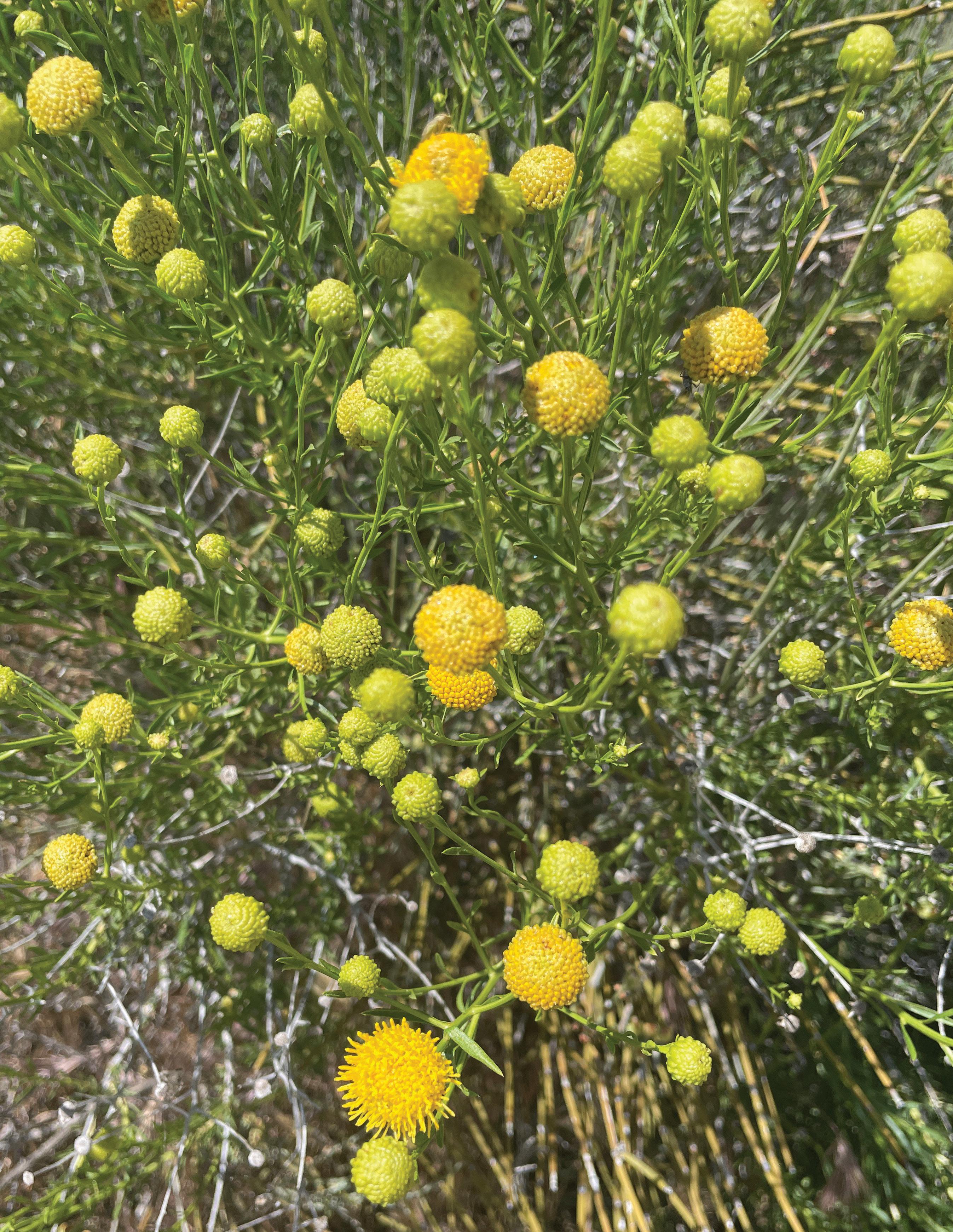
7 minute read
Small Farms, Big Impact: Bringing California’s Native Plants Back to Cuyama
By Denise Knapp, Ph.D., Director of Conservation and Research
Farmers in California are essential and resourceful. We all benefit from what they grow. But sometimes their methods aren’t sustainable. Being a small farmer, however, requires an extra special mix of conviction and ingenuity, with an eye on sustainability. Fortunately there is just such a mix in the Cuyama Valley, where Santa Barbara Botanic Garden and our collaborators at Quail Springs permaculture farm are partnering with three small farms as part of a large project to demonstrate and spread the benefits of native plants.

Let’s Meet Our Farmers
David Lewis is one of our intrepid small farmers who runs River-side Ranch Lavender. He is a civil engineer during the week and a farmer on the weekends, so he doesn’t get a lot of rest. On his farm, he is a champion for sustainability in several ways — for example, he stopped tilling to control the weeds between the trees because that reduces carbon storage. Also, to be sure he’s contributing to the community, he hires local individuals to help on the farm and with sales, while the big farms bring in outside help. And then he deals with the water restrictions. David’s farm is one of those hardest hit, since his land was fallow for most of the historic period when water allocations were assigned. Because of this, he is already very conscious of water conservation, using drip irrigation and watching closely for leaks. Keep in mind his 38 acres (15 hectares) of pistachio trees and 2 acres (.8 hectares) of lavender already require less water than many local crops. Still, he planted his trees just nine years ago, and they only recently became mature enough to harvest. He welcomes all the sustainable ways to conserve water. Although he doesn’t have time to think too much about native plants, when we asked if we could install a native demonstration garden to help, he agreed because he likes what we’re working to achieve.
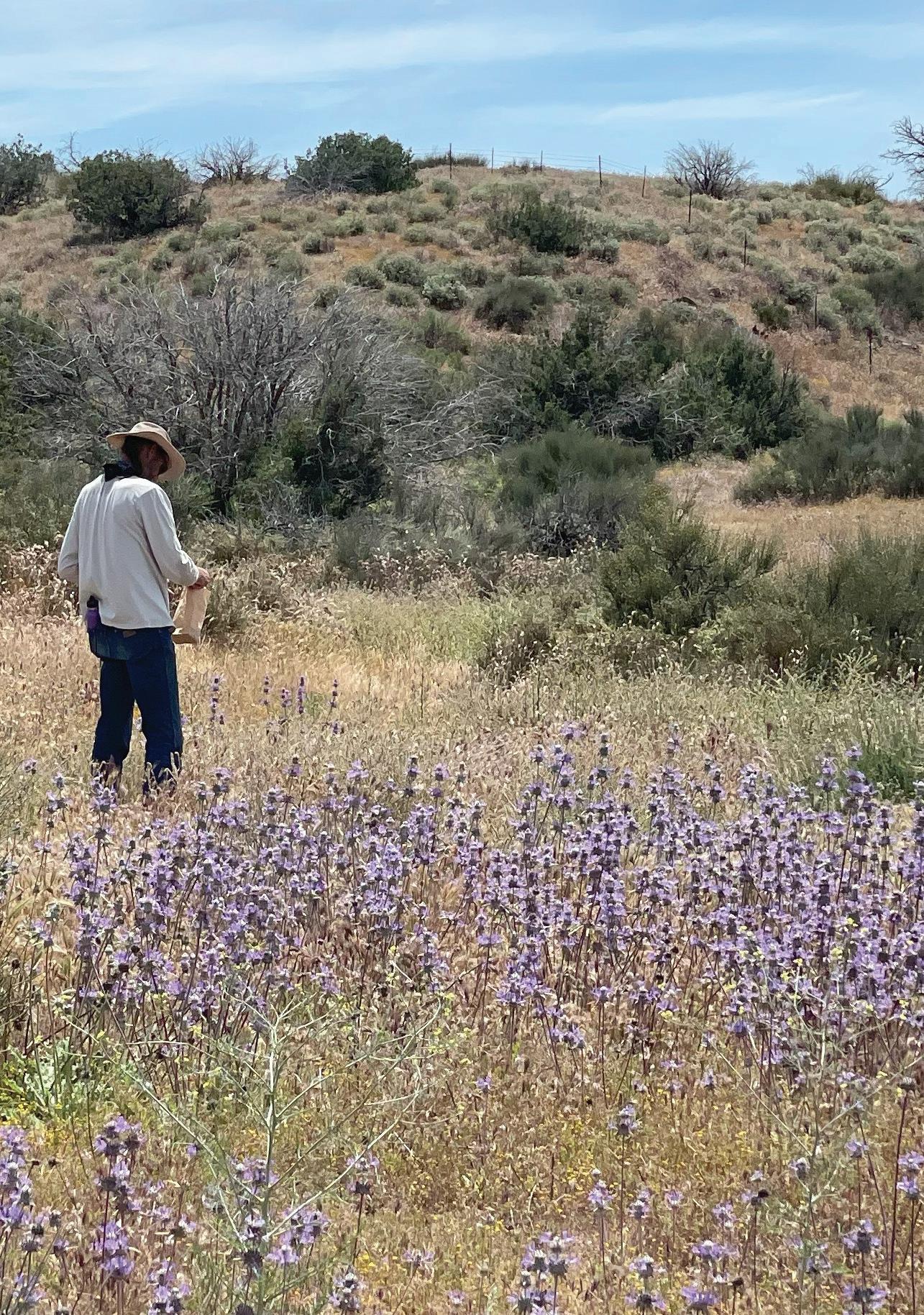
Jean Gaillard and Meg Brown run the aptly named Cuyama Homegrown. They have degrees in rural engineering and agricultural economics and a lifetime of experience in sustainable agriculture, having worked around the world from Africa to Southeast Asia to Central America for organizations like the Food and Agriculture Organization (FAO) of the United Nations and the United States Agency for International Development (USAID). They know that diversity provides resilience to annual variation, so they produce a multitude of products, from different fruits and vegetables to honey and eggs to jams and pickled beets. For greater resilience, Jean has invented special growing tunnels that provide protection to the crops from the temperature swings that are inherent to Cuyama. But climate change is adding ever more unpredictability, and they also worry that they don’t have the pollinators anymore that many of their crops need. They can no longer grow some of the crops that used to do well there, like tomatoes and eggplants. It may not be a coincidence that those two crops do best with special “buzz pollination” from insects like bumblebees, which have been declining along with others nationwide. Jean and Meg agreed right away to be part of this project because they are deeply devoted to their community and hoping that native habitat will bring these pollinators back to their farm.
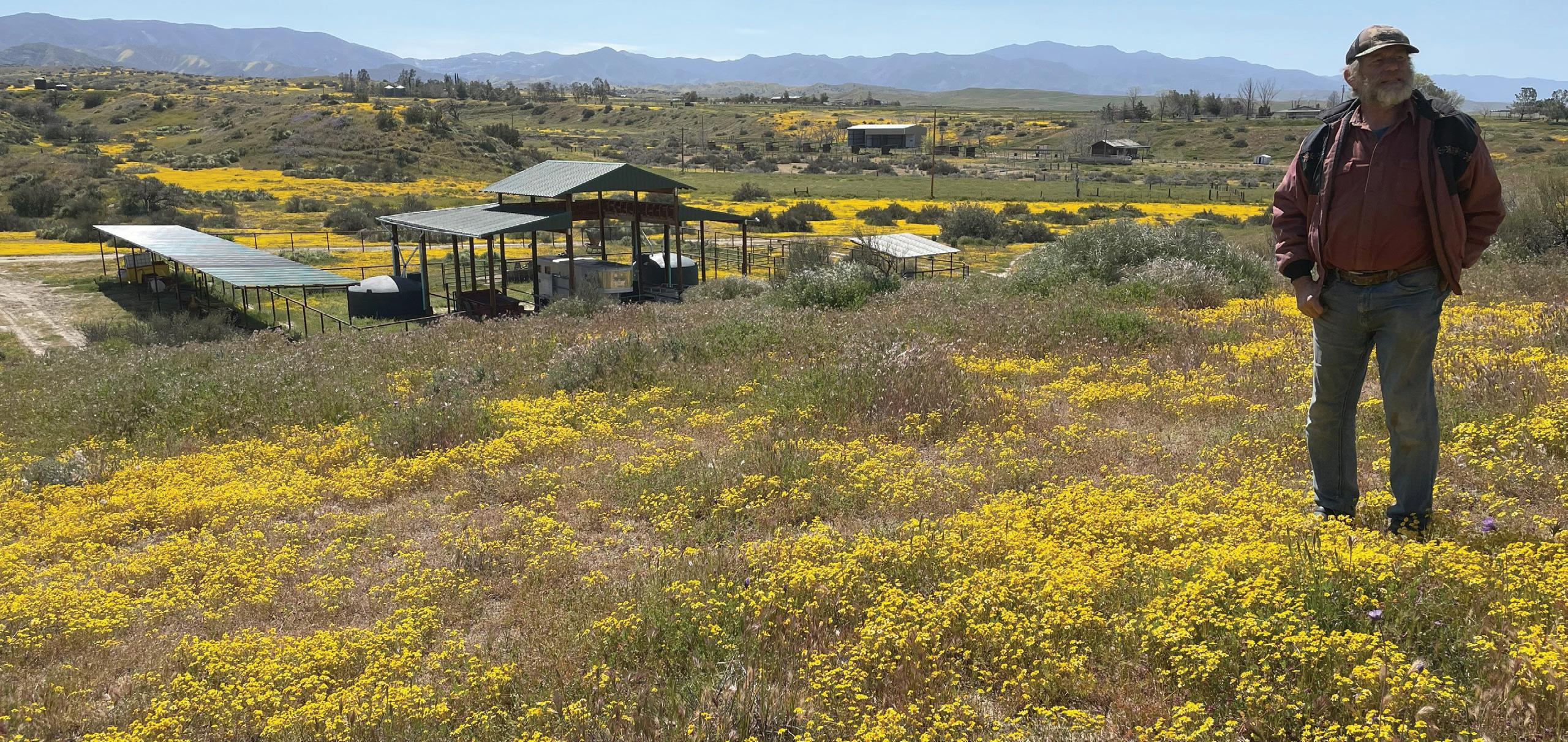
Stephen Gliessman, Ph.D., and Roberta (Robbie) Jaffe run Condor’s Hope, named for the iconic bird species that was released near their farm in 1992 after captive breeding brought it back from the brink of extinction. They grow organic wine grapes and olives using the age-old practice of dry farming. Here’s how it works: After winter rains fill the soil spaces and a cover crop has added fertility, they till the soil to create what is called a “dust mulch.” This prevents water from moving up through capillaries in the soil, creating a barrier to evaporation. It also trains their young plants to grow deeper roots, reaching for deeper groundwater. Using special heirloom varieties, which require less water, also helps. The results of these choices are that they do not need to provide any additional irrigation. These two know what they are doing. Steve is professor emeritus of environmental studies at the University of California, Santa Cruz, where he founded the agroecology program, while Robbie founded Life Lab, a nonprofit organization that develops school garden curriculum, programs, and trainings. They understand that native plants can support beneficial pest-control insects, and hope that the habitat we install will help with the leafhopper insects that have overtaken their farm with the demise of beneficial ladybug predators.
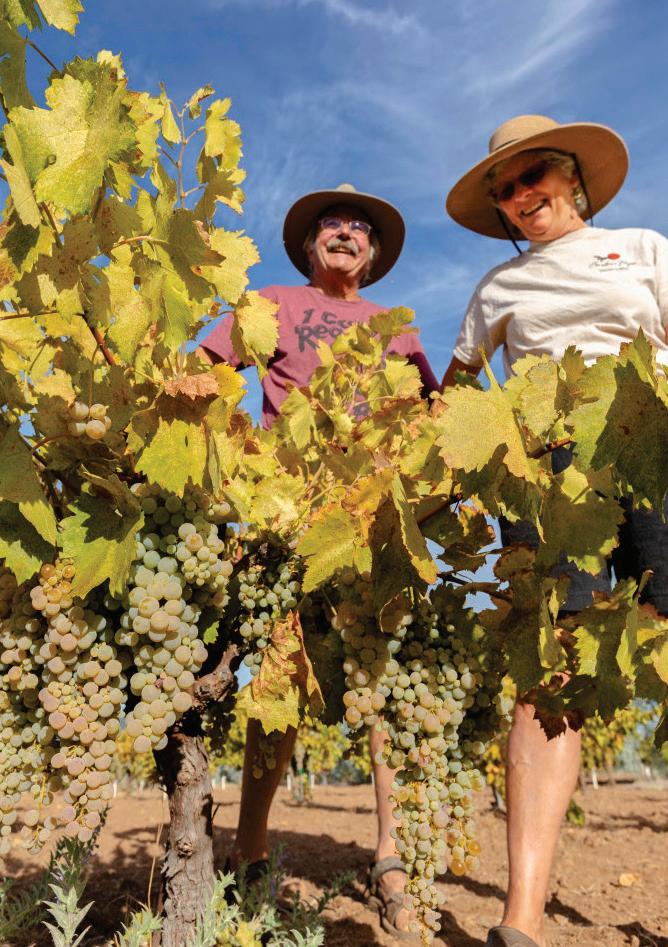
Customizing Their Native Habitat Buffers
For native habitat buffers to be adopted as a sustainable practice, they have to meet each farmer’s needs, so we’re customizing the project to our partner farms. At Cuyama Homegrown, we’re working in a weedy area, so we started by controlling the weed seed bank via tarping with black plastic through the searing heat of the summer and fall. Now, we’re planting with both seed and container stock, using plants that support pollinators, to see what techniques and which species work best there.
At Condor’s Hope, there are remnant natives mixed in with the weeds, so we’re working around them by hand weeding. We’re fitting in the new native habitat between two open areas that will become olive rows, and we’re alternating seeded and container plantings in different mixes to see which species are most successful at the higher elevation that they occupy. Lastly, at River-side Ranch Lavender the area we’re working in is dry and compacted, so we’re sheet mulching with layers of cardboard and wood mulch, which will hold in moisture and add organic matter while keeping weeds at bay. We can’t seed through the mulch, so we’re focusing on just container plantings there. By planting selected species in groupings, we’ll support bees for the lavender plants and make it easy for Dave to collect seed from these plants should he choose to market them as an additional crop. On all of these farms, we’re using local seed we’ve collected over the past year from multiple locations and 54 different species, chosen for their versatility and ability to survive the hot and dry valley floor. We are also building in some extra science experiments so that we can continue to learn which techniques and species work best while monitoring the responses of the insects to the habitat installation.
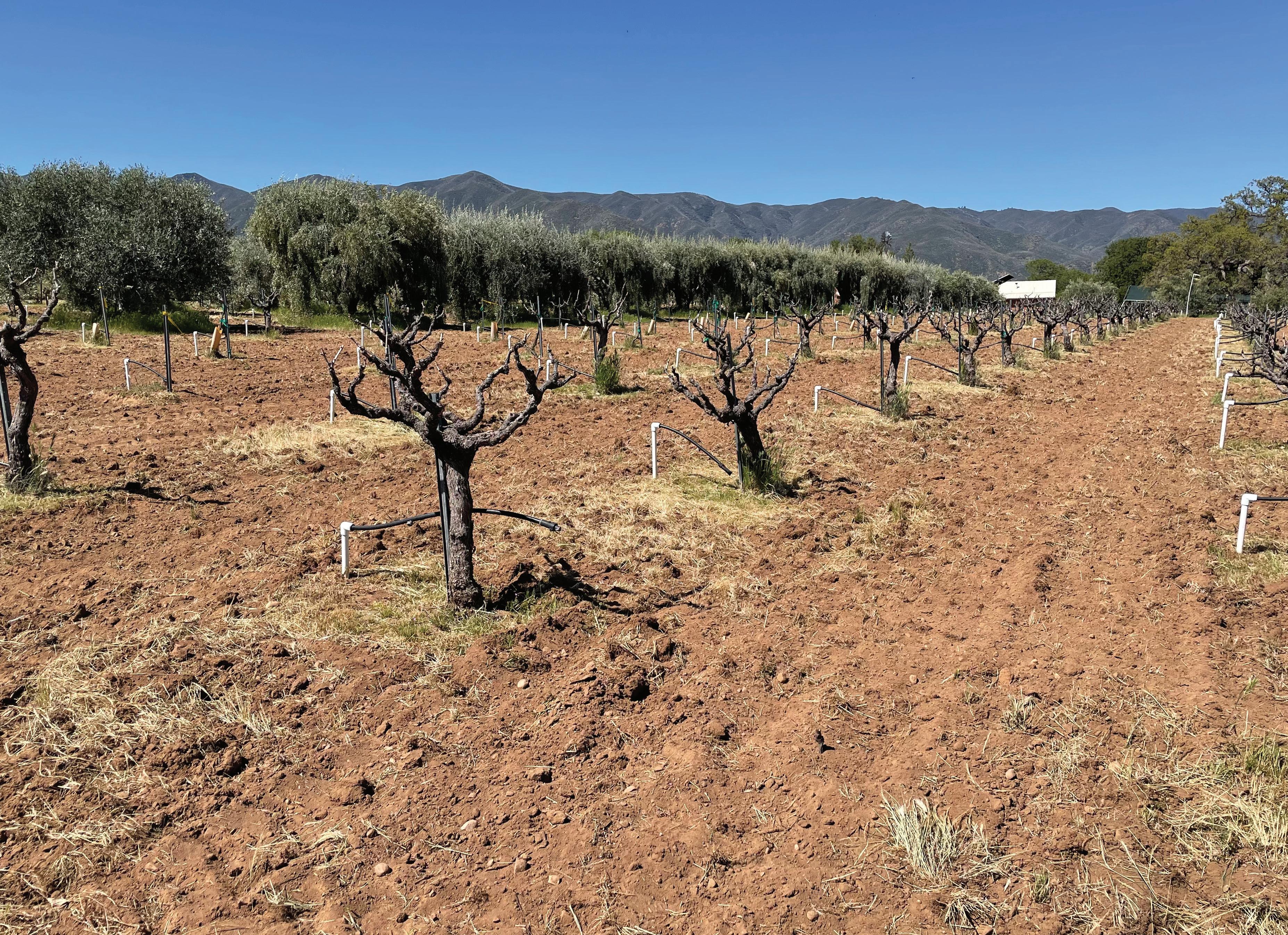
Supporting Local Farms Supports Native Plants
Diverse and water-wise farms that incorporate native habitat have always been a good idea, but now with the twin crises of climate change and biodiversity loss, these practices are more important than ever. Our partners say that the hardest part of small, sustainable farming is finding a suitable market for their products, which understandably cost a bit more. It’s hard to compete with large corporations that have the economy of scale on their side. But you can see why it’s important. Supporting these farms and sustainable farming techniques is just like supporting the Garden and our mission to grow native plants. So spread the word and shop at the farmers’ market when you can! And say hi and thanks to our superstar farmers — David, Jean, Meg, Stephen, and Robbie — when you’re there.

